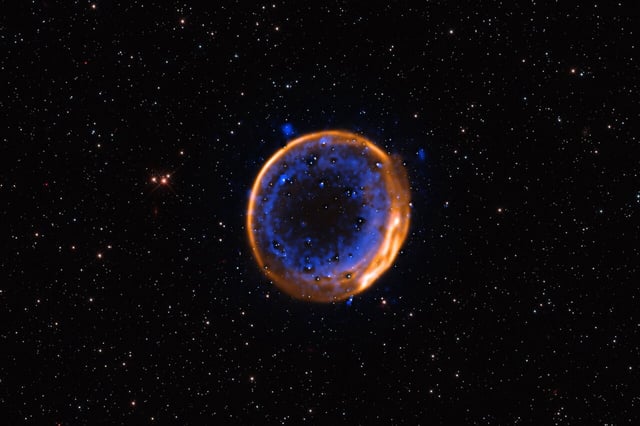Overview
- New findings published July 2 in Nature Astronomy show the supernova remnant SNR 0509-67.5 in the Large Magellanic Cloud contains two concentric shells of calcium.
- Observations with the Multi-Unit Spectroscopic Explorer instrument at ESO’s Very Large Telescope mapped the distribution of calcium, distinguishing the separate surface and core explosions.
- Detected calcium layers provide the first direct visual evidence that some white dwarfs undergo a helium-shell ignition followed by a secondary core detonation.
- The results confirm that Type Ia supernovae can detonate below the Chandrasekhar mass limit, challenging the traditional single-explosion model.
- Validating the double-detonation mechanism refines our knowledge of stellar death, iron synthesis in supernovae, and the reliability of Type Ia events as cosmic distance markers.
